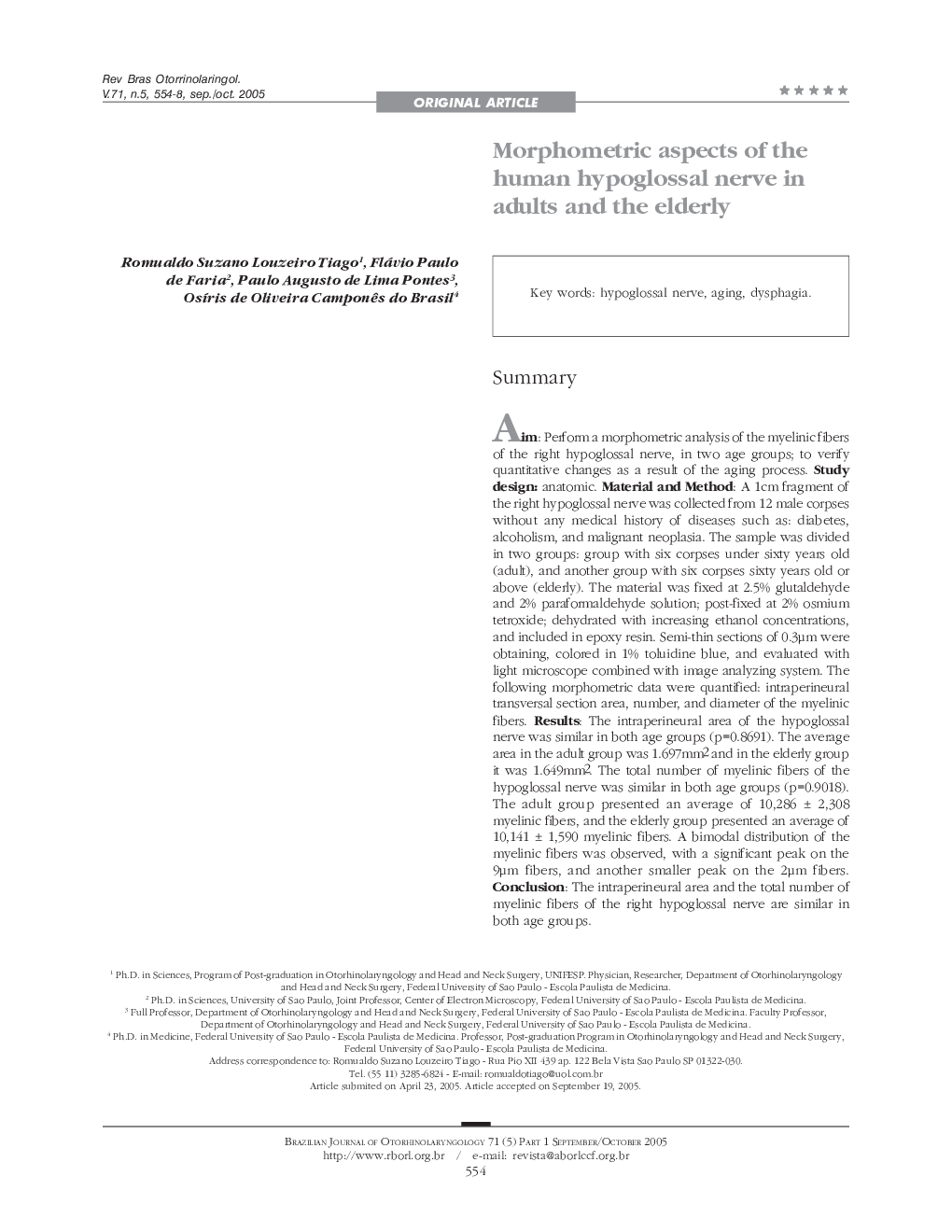| Article ID | Journal | Published Year | Pages | File Type |
|---|---|---|---|---|
| 10086883 | Brazilian Journal of Otorhinolaryngology | 2005 | 5 Pages |
Abstract
Aim: Perform a morphometric analysis of the myelinic fibers of the right hypoglossal nerve, in two age groups; to verify quantitative changes as a result of the aging process. Study design: anatomic. Material and Method: A 1cm fragment of the right hypoglossal nerve was collected from 12 male corpses without any medical history of diseases such as: diabetes, alcoholism, and malignant neoplasia. The sample was divided in two groups: group with six corpses under sixty years old (adult), and another group with six corpses sixty years old or above (elderly). The material was fixed at 2.5% glutaldehyde and 2% paraformaldehyde solution; post-fixed at 2% osmium tetroxide; dehydrated with increasing ethanol concentrations, and included in epoxy resin. Semi-thin sections of 0.3µm were obtaining, colored in 1% toluidine blue, and evaluated with light microscope combined with image analyzing system. The following morphometric data were quantified: intraperineural transversal section area, number, and diameter of the myelinic fibers. Results: The intraperineural area of the hypoglossal nerve was similar in both age groups (p=0.8691). The average area in the adult group was 1.697mm² and in the elderly group it was 1.649mm². The total number of myelinic fibers of the hypoglossal nerve was similar in both age groups (p=0.9018). The adult group presented an average of 10,286 ± 2,308 myelinic fibers, and the elderly group presented an average of 10,141 ± 1,590 myelinic fibers. A bimodal distribution of the myelinic fibers was observed, with a significant peak on the 9µm fibers, and another smaller peak on the 2µm fibers. Conclusion: The intraperineural area and the total number of myelinic fibers of the right hypoglossal nerve are similar in both age groups.
Keywords
Related Topics
Health Sciences
Medicine and Dentistry
Otorhinolaryngology and Facial Plastic Surgery
Authors
Romualdo Suzano Louzeiro Tiago, Flávio Paulo de Faria, Paulo Augusto de Lima Pontes, OsÃris de Oliveira Camponês do Brasil,
